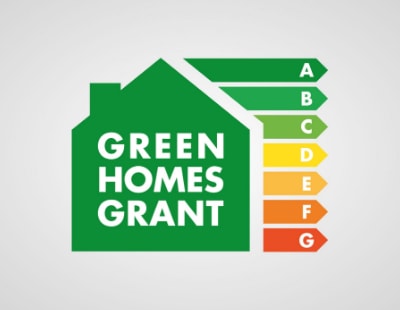The latest figures from an online estate agent have revealed which region in England and Wales is the most energy-efficient.
With 85% of Brits saying they are concerned about climate change, 84% of new homes being built in England have an Energy Performance Certificate (EPC) rating of grade A or B – and the government is currently reviewing plans to make the grading system harsher.
In light of this, Emoov analysed the most eco-friendly regions in England and Wales by measuring EPCs across different regions, focusing on those with a higher EPC A-C rating.
London topped the list of most energy-efficient regions, with two-fifths (41.8%) of residents scoring A-C on the EPC scale.
The South East came in close second, with 41% of homes scoring a rating of A-C. This was followed by the South West (39.4%), East Anglia (38.2%) and the North East (37.8%).
On the other end of the scale, Yorkshire proved to be one of the least energy-efficient regions, with just a third (33.6%) scoring an EPC rating between A and C. The North East and the North West also placed within the five least eco-friendly regions.
Wales came in ninth place, with just over a third of all properties (34.09%) rating between A-C on the EPC scale.
Ian Armstrong, director of sustainable architecture company, Arco2, holds the belief that building regulations need to be much more stringent. Currently, he says, they are only the bare minimum that is acceptable for habitation.
He comments: “EPCs are largely dependent upon the thermal performance of the fabric such as the type of insulation and window and door specification. Airtightness and thermal bridging will impact heat loss, the type of space heating and hot water appliances will also impact the energy performance rating.”
“Renewables such as solar thermal collectors and photovoltaic collectors (solar panels) both help to provide higher EPCs.”
Emoov’s research also mapped the cities most at risk of climate change, using eight factors to score the cities out of 8.
These factors include: overheating and humidity, storm damage, expected temperature rise, rainy days, rainfall amount, soil heave, slope factors and part of the city underwater by 2100.
The three highest-ranked cities, Brighton, Cardiff and Belfast, are all threatened by rising sea levels, as coastal cities prove to be the most at risk.
Brighton was also the city most at risk of storm damage. London and Cambridge scored highly on overheating and humidity, as rising temperatures endanger our cities.
Naveen Jaspal, chief operating officer of Emoov, explains: “Climate change largely affects home insurance and mortgage lending. With the increased likelihood of flooding or high winds, insurance companies have to increase their premiums on properties within a high-risk flood area.”
“In turn, these higher premiums will decrease the likelihood of getting a mortgage on these properties. Properties that are likely to become damaged will cause major uncertainty for mortgage lenders.”
He concludes: “The knock-on effect will be much higher deposits and lower loan-to-value ratios in these areas, this is a problem, as due to climate change, we are seeing these high-risk areas expanding.”
The full research and infographics can be viewed here.



















Join the conversation
Be the first to comment (please use the comment box below)
Please login to comment